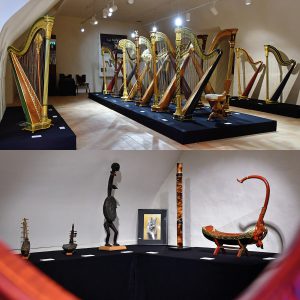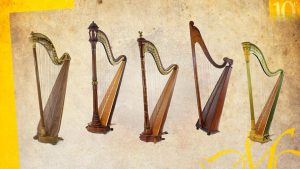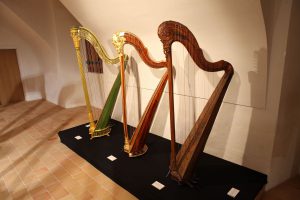Camac Blog
The Case of Harp Makers: from Erard to Camac
Latest
May 28, 2019
Organology (the study of musical instruments) is naturally relevant to us harp makers. This is how we justify absences from work to attend interesting conferences, and in fact it’s even true. We are not the first harp makers in the world: we are successors. The harp makers who came before us are our teachers: their processes, their solutions, and their relationships with musicians and dealers, all inform our own decisions. Camac is well-known for its commitment to innovation, but we are equally dedicated to tradition. Savoir-faire is about skill, not just ability, and skill must be acquired. Collective and ongoing, it builds on and develops inherited expertise.
It is therefore hardly surprising that many a maker is also an avid collector. Collectors vary in how and why they do it. Some consciously seek to put together a formal display; others collect instruments for study purposes. Others still collect spontaneously, with no conscious plan to exhibit. The “accidental” collector is typical of instrument makers, and Camac is no exception. “Form collection of historical instruments” never featured in our development plans, but Jakez has nonetheless acquired more than fifty interesting instruments…a selection of which is now on display at the Château d’Ancenis.
The curator of our Ancenis exhibit, Robert Adelson, is providing us with another good reason to abscond from the office. The University of Oxford is hosting an international conference on Musical Instrument Collectors and Collections, and Robert will contribute a paper: ‘The Case of Harp Makers: from Erard to Camac‘.
The paper’s case studies are our collecting habits, and those of Sébastien (and subsequently Pierre) Erard. Comparisons with other instrument makers such as Alphonse Sax could also be drawn, but the harp’s concentrated mechanical development, and its unusually intense decorative focus, both map unusually systematic paths to understanding and appreciating the instrument. Erard’s collection particularly conserves his most important prototypes, and instruments by other makers which lead to their invention. This is continued in the Camac collection, notably through diverse instruments of technologically innovative interest, and also later Erard models which pave the way for the continuation of his legacy. Our collection also follows the evolution of decorative harp styles, informing observations on the development of taste, and also the use of special styles in the development of a brand. As a result of both prototype preservation and curious collecting, the Camac collection is also unique in being able to trace the history of the both phases of the Celtic harp revival over two centuries.
The draft programme of the full conference is available here, and registrations are open here.
Congratulations are also in order to Robert because he has won the 2019 Frances Densmore Prize. This is awarded annually by the American Musical Instrument Society, for the most distinguished article-length work in English which best furthers the Society’s goal ” “to promote study of the history, design, and use of musical instruments in all cultures and from all periods.”




